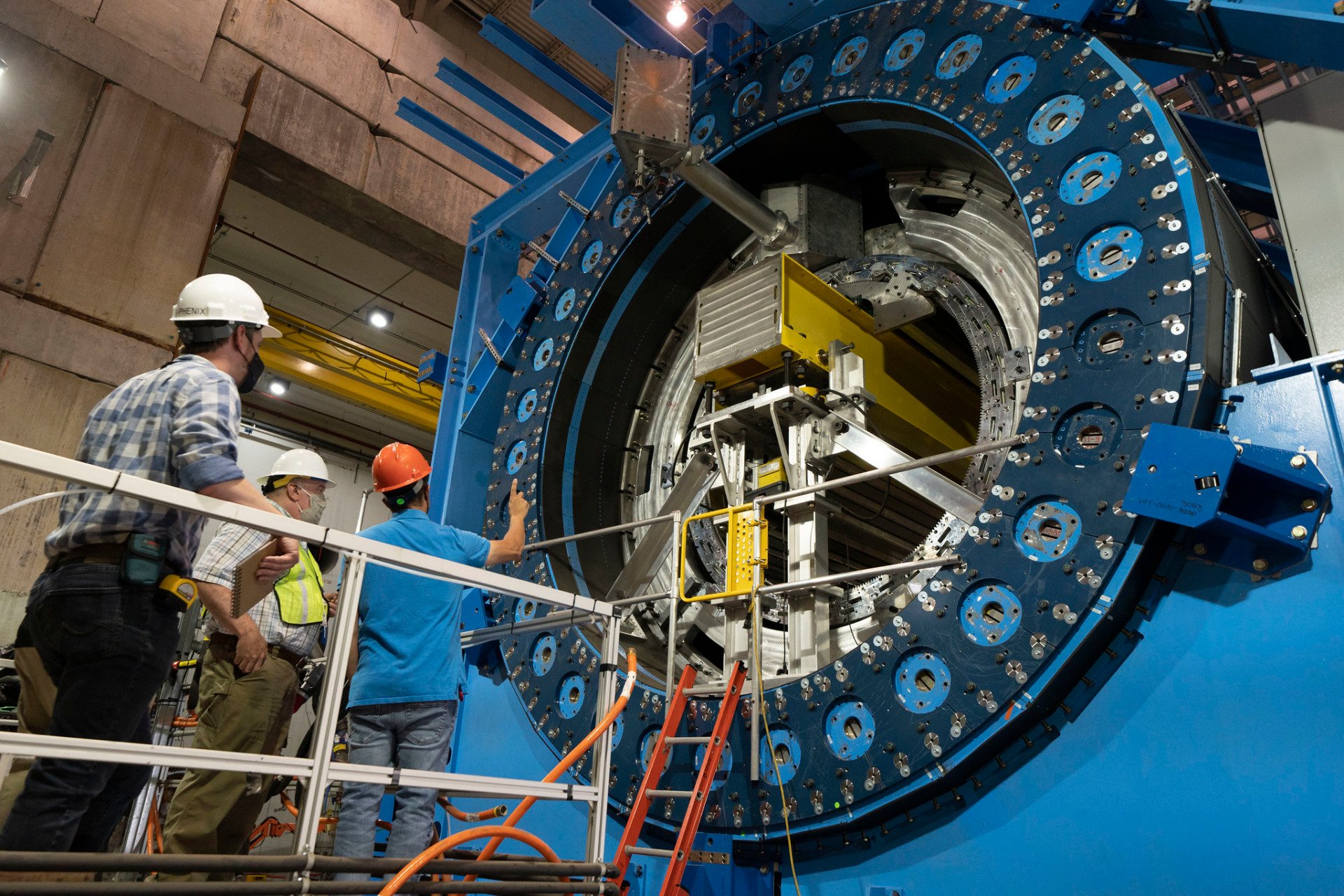Science
Long Island’s sPHENIX Detector Completes Key Test for Big Bang Study

Researchers from the sPHENIX Collaboration have announced that their new detector has successfully passed a critical test, marking a significant step in understanding the early universe. In a paper published in the Journal of High Energy Physics, the team confirmed that the sPHENIX detector effectively measured the energy levels of colliding gold ions traveling at nearly the speed of light. This achievement reflects a major advancement in efforts to explore conditions similar to those just moments after the Big Bang.
The sPHENIX, a substantial upgrade to the now-retired PHENIX detector, is located at the Brookhaven National Laboratory’s Relativistic Heavy Ion Collider (RHIC). Weighing 1,000 tons and standing two stories tall, the detector features a sophisticated camera capable of capturing and measuring up to 15,000 particle collisions per second. According to Gunther Roland, a physicist at MIT and a member of the sPHENIX Collaboration, this milestone is akin to launching a new telescope into space after a decade of development. “It’s as if you sent a new telescope up in space after you’ve spent 10 years building it, and it snaps the first picture,” Roland stated.
Pursuing the Mystery of the Universe’s Origins
Understanding the universe’s first moments remains a challenge for scientists. During the initial microseconds after the Big Bang, quarks and gluons existed in a state separate from protons and neutrons, forming a dense plasma known as quark-gluon plasma (QGP). The RHIC aims to recreate these extreme conditions by accelerating particles to high speeds and colliding them, generating a brief but intense burst of energy representative of the early universe.
“You never see the QGP itself—you just see its ashes, so to speak, in the form of the particles that come from its decay,” Roland explained. The main focus of the sPHENIX detector is to analyze these decay particles to reconstruct properties of the QGP, which exists for an incredibly short duration, measured in sextillionths of a second.
The successful passing of the “standard candle” test is a promising indicator for future research. However, the team plans to conduct additional quality assessments to fully validate the detector’s capabilities. The sPHENIX functions like a “giant 3D camera” that tracks the number, energy, and trajectories of particles from single collisions, allowing researchers to delve deeper into rare processes that were previously challenging to study.
Looking Ahead: Data Collection and Future Prospects
The sPHENIX detector is currently engaged in data collection for RHIC’s 25th and final run. Following this phase, the collider will be succeeded by the Electric-Ion Collider, set to advance the field further. “The fun for sPHENIX is just beginning,” said Cameron Dean, a postdoctoral student at MIT and fellow collaborator.
As the team prepares for ongoing research, they remain optimistic about the insights the sPHENIX will bring. The technological advancements integrated into the detector since RHIC’s inception 25 years ago position it to contribute significantly to our understanding of the universe’s origins and the fundamental forces at play in its early moments.
-

 Technology5 months ago
Technology5 months agoDiscover the Top 10 Calorie Counting Apps of 2025
-

 Health2 months ago
Health2 months agoBella Hadid Shares Health Update After Treatment for Lyme Disease
-

 Health3 months ago
Health3 months agoErin Bates Shares Recovery Update Following Sepsis Complications
-

 Technology4 months ago
Technology4 months agoDiscover How to Reverse Image Search Using ChatGPT Effortlessly
-

 Technology1 month ago
Technology1 month agoDiscover 2025’s Top GPUs for Exceptional 4K Gaming Performance
-

 Technology2 months ago
Technology2 months agoElectric Moto Influencer Surronster Arrested in Tijuana
-

 Technology5 months ago
Technology5 months agoMeta Initiates $60B AI Data Center Expansion, Starting in Ohio
-

 Technology5 months ago
Technology5 months agoRecovering a Suspended TikTok Account: A Step-by-Step Guide
-

 Health4 months ago
Health4 months agoTested: Rab Firewall Mountain Jacket Survives Harsh Conditions
-

 Lifestyle5 months ago
Lifestyle5 months agoBelton Family Reunites After Daughter Survives Hill Country Floods
-

 Technology4 months ago
Technology4 months agoHarmonic Launches AI Chatbot App to Transform Mathematical Reasoning
-

 Technology3 months ago
Technology3 months agoUncovering the Top Five Most Challenging Motorcycles to Ride





















